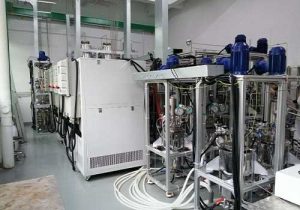vapour compression chiller
Understanding Vapor Compression Chillers
Vapor compression chillers (VCCs) are the backbone of many heating, ventilation, and air conditioning (HVAC) systems. They function based on the principles of thermodynamics, where a refrigerant changes phase to absorb and remove heat from an area. The cycle includes four main components: an evaporator, a compressor, a condenser, and an expansion device. The refrigerant evaporates in the evaporator, absorbing heat from the space to be cooled. It then gets compressed in the compressor, condenses in the condenser by releasing heat to the outside environment, and finally, it expands in the expansion device, preparing it to return to the evaporator and repeat the cycle.

Improving Chiller Performance
The performance of VCCs can be improved in several ways. One method is by increasing the chilled water temperatures. Research has shown that for each one-degree Celsius increase in the chilled water temperature, the coefficient of performance (COP) of the chiller improves by about 3.5%, while the cooling capacity improves by about 4%. This can lead to significant energy savings, especially in applications where the chiller operates for extended periods.
Natural Refrigerants and Environmental Impact
As the HVAC industry moves towards more sustainable practices, there is a focus on using natural refrigerants that have a lower environmental impact. Water (R-718) is one such natural refrigerant that has been considered due to its excellent thermodynamic properties, high latent heat of vaporization, and environmental friendliness. However, the use of water as a refrigerant presents technical challenges such as high specific volume of water vapor and high compression ratios, which require specialized compressor designs and system configurations.

Latest Advancements in Cycle Improvements
Recent advancements in VCC systems aim to enhance efficiency and reduce environmental impact. These include the use of two-phase ejectors, expanders, and dedicated mechanical subcooling systems. These improvements can lead to a significant increase in the COP and cooling capacity of the chiller system. Additionally, the integration of advanced control systems and the use of IoT technologies can further optimize the operation of VCCs, leading to more energy-efficient and sustainable cooling solutions.

Conclusion
Vapor compression chillers are essential for providing cooling in various applications. By understanding their operating principles and making improvements such as elevating chilled water temperatures and using natural refrigerants, the industry can move towards more energy-efficient and environmentally friendly cooling solutions. The ongoing research and development in this field promise a future where chiller systems are not only highly efficient but also have minimal environmental impact.
Related recommendations
40 ton water cooled chiller
86240 Ton Water-Cooled Chiller: High-Capacity Cooling Solutions A 40-ton water-cooled chiller is an essential piece of equipment for large commercial buildings, data centers, and industrial proces...
View detailswater cooled and air cooled chiller difference
461Water-Cooled vs. Air-Cooled Chiller Systems: Understanding the Key Differences Chiller systems are essential for maintaining optimal temperatures in commercial and industrial settings. Two pred...
View detailsSix Suggestions for Chiller Selection
1514Six Suggestions for Chiller Selection Unitization of refrigeration system is the development direction of modern refrigeration equipment. The chiller is a refrigeration unit that assembles al...
View detailscustom heaters
286What are Custom Heaters? Custom heaters are heating devices engineered to meet specific operational requirements that standard heaters cannot fulfill. They are designed with unique specificatio...
View details
 LNEYA Chiller
LNEYA Chiller






HelloPlease log in